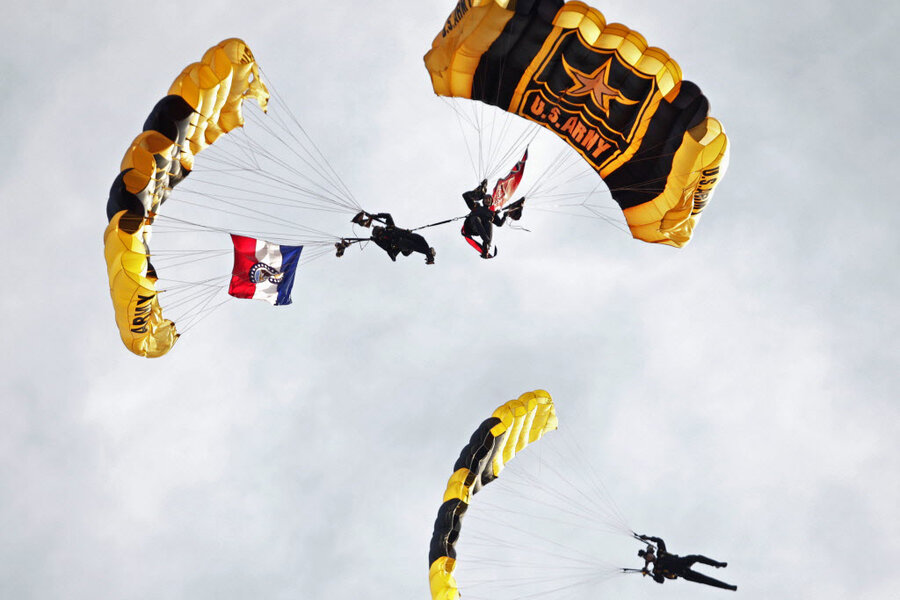Navy SEAL accident Ariz.: Member of SEAL Team 6 killed
| Tucson, Ariz.
Brett D. Shadle always had wanted to be a member of the Navy's most elite special forces unit. A year after enlisting, he made it happen and went on to become a highly decorated member of the Navy's famed SEAL Team 6.
US military officials confirmed Saturday that Shadle, a 31-year-old special warfare operator chief, died Thursday when he and another SEAL collided in midair during a parachute training exercise over the rugged desert of southern Arizona.
Shadle was taken to University of Arizona Medical Center in Tucson, where he was pronounced dead. The other SEAL — an unidentified E-6 petty officer first class — remained in stable condition Saturday at the Tucson hospital.
Military officials said the accident was under investigation.
Family members said Shadle, of Elizabethville, Pa., was stationed in Virginia. He was married and had a 2-year-old son and 4-year-old daughter.
His uncle Donald Shadle, 67, of Elizabethville, expressed disbelief, saying his nephew had been on many overseas missions only to come back and get killed during a training exercise.
"He was always a good kid, and he always wanted to be a Navy SEAL and that's what he did," Donald Shadle said.
Shadle enlisted in the Navy in July 2000. The following year he completed his SEAL training and was assigned to his first unit in early 2002.
Navy officials said Shadle had earned multiple Bronze Star Medals with Valor and several service ribbons. While details about his deployments were secret, officials confirmed he had served in Afghanistan and Iraq.
Shadle and a fellow SEAL were practicing "routine military free-fall training" when the accident occurred Thursday afternoon, said US Special Operations Command spokesman Kenneth McGraw. The SEALs collided in midair and landed in separate areas.
The command has a parachute testing and training facility at the Pinal Airpark northeast of Tucson, McGraw said. Training programs are operated there year-round.
The Navy's SEAL Team 6 gained international attention when it was revealed that members of the top secret unit had carried out a raid in Pakistan in 2011 in which Osama bin Laden was killed. Bin Laden became the most wanted man in the world after the Sept. 11, 2001, terrorist attacks that killed almost 3,000 people.
Team 6 was hit hard later that same year when 22 SEALs from the special unit were killed when the helicopter they were riding in was apparently hit by an insurgent's rocket-propelled grenade. None of those killed on the helicopter was part of the bin Laden raid. Their deaths marked the nation's single deadliest day of the decade-long war in Afghanistan.
Associated Press writers Susan Montoya Bryan in Albuquerque, N.M., and Ron Todt in Philadelphia contributed to this report.






